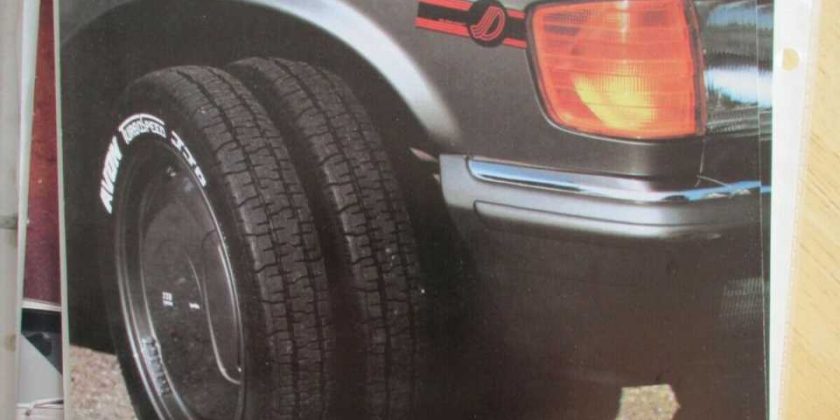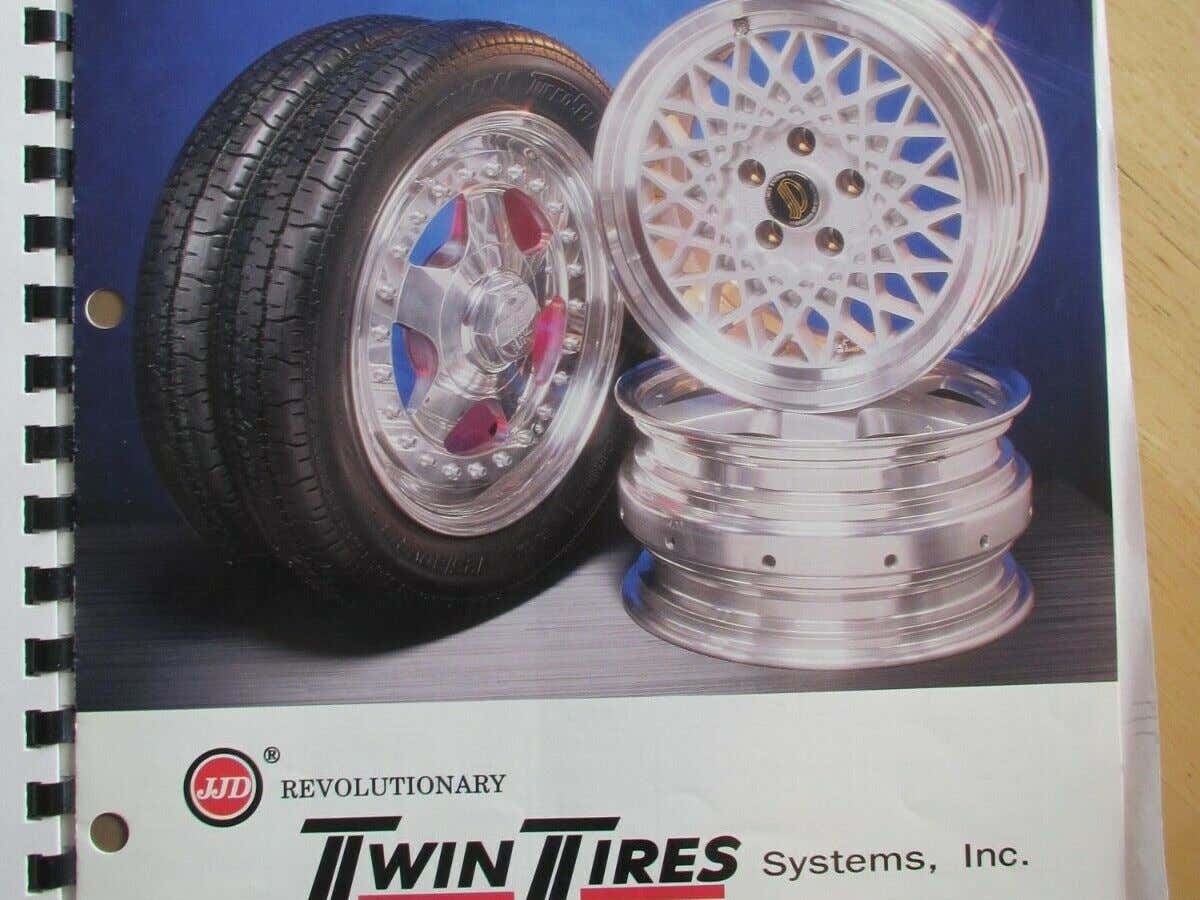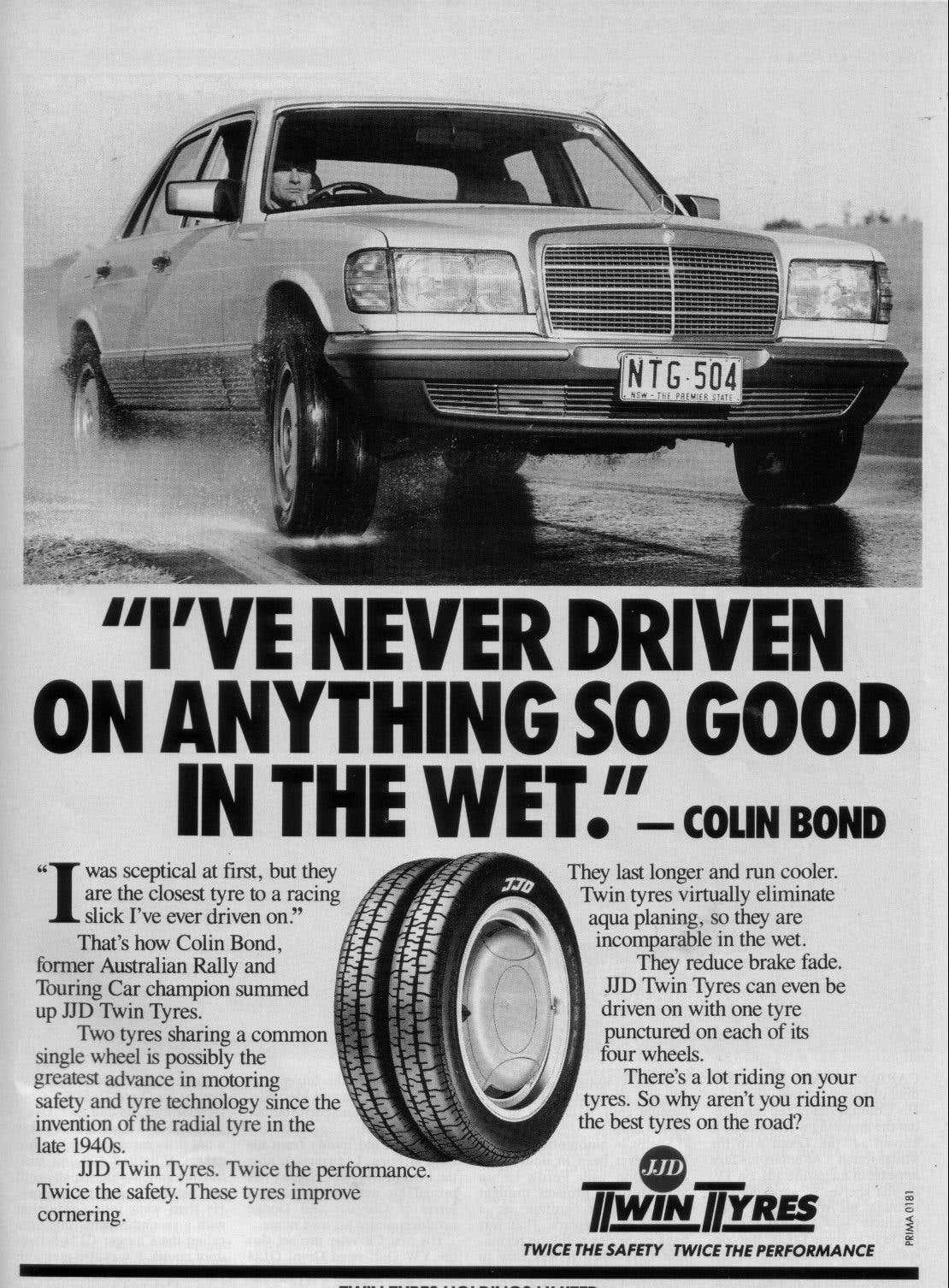The Lotus Esprit was one of the quickest cars of the 1980s—provided the road was dry. Legend has it that Porsche factory racing driver Jaroslav “Jerry” Juhan once watched a Citroën 2CV disappear down the road during a rainy drag race. The alleged reason? Narrow tires on the Citroën finding grip where his Lotus’s couldn’t. If only there were a way to balance tiny contact patches with having enough rubber for a performance car, Juhan must have thought, before a lightbulb went off in his head.
Such an idea spawned Juhan’s firm JJD Twin Tires, which offered passenger car wheels that mounted two narrow tires instead of one wide. The idea was that this increased grip in the wet without compromising it in dry conditions, not to mention adding the ability to drive on flat tires. An outlandish proposal, maybe, but Juhan’s reasoning was solid enough to convince wheel manufacturers ATS, Crimson and Speedline to supply JJD with compatible wheels, and Avon and Toyo, special rubber, apparently amounting to motorcycle tires with reinforced sidewalls.
JJD Twin Tires sales brochure
If accounts of Twin Tires’ use from around the net indicate anything, Juhan’s reasoning was right on. One Bring A Trailer commenter reported customers racing sidecar bikes lopping a second from their lap times upon switching to Twin Tires, while a VWVortex poster claiming to be JJD’s factory racing rep remembers them fondly. They recall running the setup on a Porsche 914-6 track car, losing no obvious performance, but reducing overall tire consumption, as negative camber tended to eat only the inside tire. They also bragged of being “the only car to race in the Nevada Open Road Challenge with four flat tires.”
JJD Twin Tyres ad from Australia
JJD’s dually system, however, did have some obvious shortcomings. It was significantly heavier than the traditional single-tire setup, not to mention more complex to service if both tires needed replacement. More significantly, though, JJD reportedly didn’t widely advertise its products outside car magazines, so it already didn’t have much of a customer base to defend as lightweight alloy wheels became cheaper throughout the ’80s and ’90s. By the time the new millennium neared, JJD Twin Tyres had reportedly been sold to an unspecified Indonesian conglomerate, in whose hands it eventually folded.
Today, old Twin Tire-compatible wheels are little more than historic curiosities, and occasionally pop up for sale wearing worn-out old rubber—like one set recently listed on eBay in Canada. This set of three wheels wears six tires that are definitely too old to drive on, though their seller claims Continental offers highway-rated modern options that would fit. Being a set of three, of course, it won’t fit on just any car, so perhaps they belong on some strange three-wheeler conversion of the era. We can think of a Chevrolet Citation that fits the bill perfectly.
Source: Read Full Article


